Midwife Jannie saved a mother’s life – a serious back injury then gave her years of severe and chronic pain
St Vincent's Private Hospital Brisbane
This week is National Pain Week. Pain Australia says one in five Australians live with some form of regular pain. It’s often an “invisible condition” which steals enjoyment and quality from people’s lives. For midwife Jannie Milborrow, it’s been a long road back - but she says she has her life back, thanks to Dr Ramsey Jabbour, a leading specialist Pain Medicine Physician and Specialist Occupational Physician at St Vincent’s Private Hospital Northside and St Vincent’s Private Hospital Brisbane.
May 20, 2021 was the day that the course of two lives were changed dramatically all at the same time - as midwife Jannie Milborrow performed an emergency lifesaving procedure on a young mother who had just given birth in hospital.
An experienced midwife at a North Queensland hospital, Jannie responded to the emergency, performing bi-manual compression of the uterus to stop post-partum haemorrhaging by the patient. Jannie’s instinctive action however, meant that she had to place herself in an awkward position on the hospital trolley for the procedure for several minutes to continue the compression, as the patient was wheeled to theatre for emergency surgery.
Thankfully the mother survived – but it resulted in a life-altering back injury for Jannie, now aged 45.

“At the time, I didn’t notice any sharp pain – you’ve got adrenaline coursing through your body and you’re so focussed on saving the mother’s life. But when I got up the next day my back was really sore which was unusual for me as I’d never had back issues before,” she says.
“I had a massage, went to the physiotherapist but the pain only intensified over the ensuing days and weeks and I was actually forced to lodge a WorkCover claim and had four months off work.”
Jannie notes that she was told she had “damaged discs in her lumbar spine” and was eventually diagnosed as having back pain that would not benefit from surgery, after review with a spine surgeon.
Before her injury, Jannie was a very active person, including running three times a week and running a busy household with two daughters and her husband spending time away from home working as a diesel fitter in the mines.
Life quickly became a roller coaster of chronic pain, sick leave from work and seeking various avenues of pain relief and pain management for Jannie – with the worst days seeing her pain rising to a what felt like an 8 or 9 out of 10 and limiting her to walking no more than 10 metres and to standing up for no more than a few minutes.
Jannie tried a range of treatments and pain management options including steroid injections, endless painkillers and nerve pain drugs. Having exhausted those options, she feared she might have to give up work – although she says her manager at the hospital was very understanding and empathetic.
However, at one stage, the relentless pain was so intense for her, Jannie briefly considered taking her own life!
“A long term injury and chronic pain from it really compromises your quality of life – it actually really takes your life away from you so there was one point where I was in a dark tunnel and I started thinking, ‘Well if this is what the rest of my life is going to be like, what’s the point?’,” she confesses.
“But then I saw a psychologist and they really helped me get through that dark period and it was good for me to be able to work through the issues at the time. Plus having a loving and supportive husband and family made a huge difference.”
Jannie was referred in 2021 to Dr Ramsey Jabbour, a leading specialist Pain Medicine Physician and Specialist Occupational Physician at St Vincent’s Private Hospital Northside and St Vincent’s Private Hospital Brisbane.
Dr Jabbour specialises in the management of chronic pain and in the use of minimally invasive neuromodulation techniques to complement treatment. These include radiofrequency ablation and advanced neuromodulation techniques, for example, spinal cord stimulators, to minimise the effects of pain. These techniques are designed to reduce pharmacological therapy and improve the patients’ quality of life.

With Jannie, Dr Jabbour initially trialled various modalities of treatment, to help manage her pain. However, unfortunately in Jannie’s case, they were not providing her the pain relief required in order for her to return to her chosen profession.
When the pain management plan wasn’t providing Jannie the long-term relief required, and through ongoing further assessment, Dr Jabbour established that Jannie was a suitable candidate for interventional management and suggested the option of trialling a spinal cord stimulator (SCS) device.
The trial is a procedure in which epidural leads are placed, through epidural needles in the back, into the space behind the spinal cord (the epidural space) with the remainder of the leads being connected to an external device, for a seven-day trial. (During this trial period, Jannie, and the team, could assess how effective the device was for her.)
The spinal cord stimulator device consists of two epidural leads and an implantable pulse generator [a battery]. The stimulator can reduce the amount of pain signals which continue to be generated from the source of pain, reaching the brain, by acting as a ‘signal dampening device’ on the spinal cord.
This can then provide a reduction in the amount of pain an individual experiences, allowing them to have an improved quality of life.
In Jannie’s case, after a successful trial, the device was fully inserted in late November 2023 and she says after some initial programming adjustments to achieve the right settings, she hasn’t looked back.
“When I saw Dr Jabbour, I was willing to try almost anything. I told him I just wanted to be out of constant and severe pain. He’s been fantastic in his advice and treatment and in guiding me down a better path where the pain that used to be an 8 or 9, is now a 1 or 2 most days,” she says.
“It has definitely given me my life back. While there’s certain things I can’t do, such as running and lifting too many things, you learn to accept the parameters of what’s safe and not safe. You find a new normal - so for me, for example, that’s riding a bike instead of running.
“There’s good weeks and bad weeks but recently I’ve been very good and haven’t had so much as a Panadol for the past fortnight.”
Dr Jabbour says spinal cord stimulator devices have been around since the late 1960s and over time, have gone through a number of significant new technological advances. With these new developments, and through ongoing published research, the indications for their use have increased.
The devices are used worldwide, and have become a proven and effective option in the management of chronic pain, for carefully selected patients, who have not received significant pain relief from other treatment modalities; and for patients who remain significantly hindered due to their pain. Importantly, they have been identified as having a specified medical condition that is likely to respond when the devices are used.
Dr Jabbour says that patients with long term injuries who still suffer from chronic pain are in some cases medically challenging to manage.
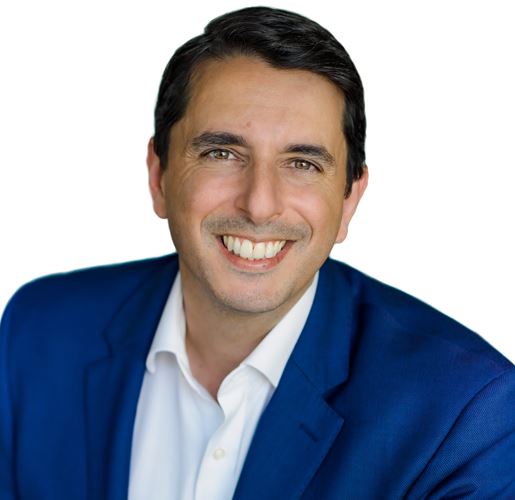
“Their initial injury can have life changing detrimental effects including effects on their psychology, and also long term disability, which can lead to them having to give up work. This can then lead to severe financial implications for them, and their families,” says Dr Jabbour.
“There is now significant evidence that in carefully selected patients, who have medical conditions that are known to be responsive to this form of therapy, these devices are effective.
“That is, research has shown, that with certain chronic pain conditions, over 70% of eligible people are likely to respond well to the use of SCS and gain a reduction of 50% or more in their pain. This dramatically improves their quality of life and then gives the individual the ability to continue with their rehabilitation and to reintegrate back into society, with significantly less pain.
“When considering this form of treatment, with patients like Jannie, it is a form of minimally invasive treatment, which is a non-drug therapy. If an individual has tried conservative management first, and there are no potential other treatment options and the person is assessed to be a suitable candidate, who is significantly hindered by their pain, spinal cord stimulator devices can be lifechanging.
“However, the data also shows that around 20-30% of patients undergoing a trial of the stimulator device, even with meticulous screening to ensure they are suitable to undergo this form of treatment, do not respond – and don’t achieve 50% or more relief in their pain, and so they would not be suitable to undergo permanent implantation. In these cases, it is imperative that we don’t give the patient false hope.
“Like with any surgical procedure involving the spine, there are rare but significant risks associated with the procedure which need to be thoroughly discussed with the patient before undergoing the SCS trial.
“In summary, it is important to remember, that with chronic pain management one has to take a holistic approach to treatment – that is the spinal cord stimulator device is not a solitary treatment option, although in some cases it can be an important one.
“It should be used in tandem with a multi-disciplinary approach to management which may include a combination of therapies including physical therapy, as well as, psychological therapy, focusing on the treatment of all aspects of an individual’s suffering, as a result of living with their chronic pain.”
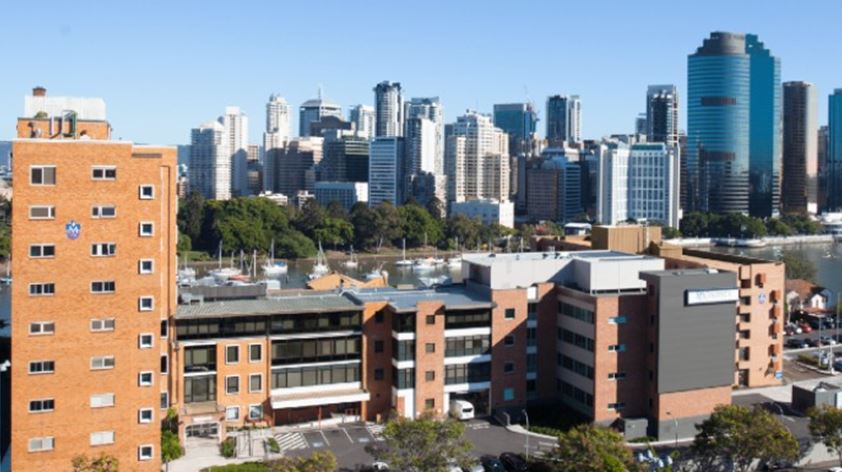
St Vincent’s operates the Brisbane Centre for Pain Management at St Vincent’s Private Hospital Brisbane (Kangaroo Point), offering one of Australia’s most comprehensive range of pain management services and specialties in one location.
St Vincent’s Brisbane has a dedicated operating theatre equipped with state-of-the-art technologies to support complex pain procedures, consultation rooms, spacious recovery suites and a variety of surgical and therapeutic options. It’s also been running the Pain Management Program (a group program with some one-to-one sessions) since 2012 helping thousands of patients with a multi-disciplinary approach.
The program can also cater for any St Vincent’s outpatients aged over 14, offering the only adolescent pain management program in Australia designed to help young people who suffer chronic pain.
Dr Michelle O’Brien is a specialist pain medicine physician and anaesthetist also working at St Vincent’s who specialises in chronic pain and minimally invasive neuromodulation techniques, including radiofrequency ablation and advanced neuromodulation delivered in the multidisciplinary team management setting.
Dr O’Brien, who is also currently President of the Neuromodulation Society of Australia and New Zealand, says with this model, the patient plays the central role to develop a multimodal approach to their pain management, incorporating a tailored combination of evidence-based pain education, psychological strategies, physical therapy and rehabilitation, medications - as well as interventional procedures including advanced neuromodulation such as spinal cord stimulation.
“There are many reasons why people experience chronic pain - and pain management can help with all of these. Any part of the body can be affected by chronic pain and there are many different approaches that can be used,” says Dr O’Brien.
“Pain can inhibit or have an impact on everyday function from the ability to work to full capacity and functionality, right through to completing normal everyday household tasks, physical activity and social engagement that we all take for granted.
“Pain acts as our body’s alarm system and when that alarm is constantly going off this can challenge people’s coping skills and affect important body functions like sleep and mood. Pain signals travel along nerve pathways and our current imaging technology can’t show nerve pain which makes it more challenging to manage.

“It’s important that people who suffer from chronic pain know that there are medical experts who just specialise in managing pain. There are pain services with trained people who can help specifically in pain and there are numerous management options.
“Patients just need a referral to a pain specialist who can then assess the patient and then come to an agreement about the best approaches.”
Jannie is aware of some controversy and adverse media coverage regarding some patients who have had less successful outcomes from spinal cord stimulation at various hospitals around Australia - but she says that people shouldn’t be unduly influenced by negative media.
“Start by seeing your GP and get referred to the right sort of specialist - I was lucky to be referred to a specialist pain physician in Dr Jabbour. People should make their own informed decision but don’t be scared of the options because one of them could just give you your life back,” she says.
“I definitely feel that I have got mine back. I’m back at work, keeping active and I have a grandson who I can pick up and cuddle. That makes it all worthwhile.”
Related content
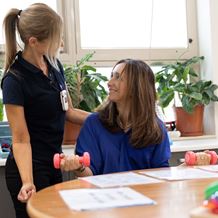
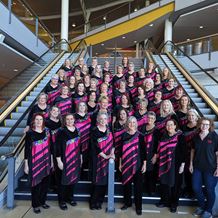
Chronic pain affects one in seven Australians: Janis 'sang' her way through this invisible illness
Chronic pain affects one in seven Australians: Janis 'sang' her way through this invisible illness
Read More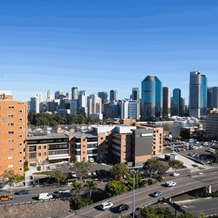
- Home
- Patient News
- A serious back injury gave Jannie years of severe and chronic pain

